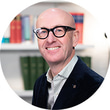- OT
- Life in practice
- Practitioner stories
- Optometry down under
Optometry down under
Optometrist and president of Optometry Australia, Kate Gifford, on her experience of the profession

12 July 2016
What is a typical working day like for you?
I enjoy an equal split between adult and paediatric binocular vision, as well as contact lens-wearers of all ages. In the school holidays our practice is full of children and their siblings bouncing on bean-bags and reading picture books in our waiting room. When I’m not in my practice, I’m writing educational articles or conference lectures, and teleconferencing, meeting or travelling in my role as national president of Optometry Australia, our professional organisation.
Which aspect of your current role inspires you the most?
The most important part of my role as a healthcare provider is education – to ensure my patients, and their parents, fully understand their vision and eye health, and their options to manage both. Myopia control is a growing area of optometry practice that offers an opportunity to beneficially modify a child’s lifelong risk of eye disease. I especially enjoy discussing scientific research as it applies to clinical care. I also really enjoy seeing children and adults with tricky binocular vision problems, who are either referred by colleagues or find us themselves. Restoring their visual comfort, sometimes after years of strain and diplopia, is infinitely rewarding.
"Optometry is endlessly fascinating as a profession, and an integral part of the healthcare system. If I had the power, I’d crawl into the brains of my colleagues and dial up their confidence as health practitioners"
Where do you see the direction of optometry heading in the next five years?
I believe we’ll need to do a lot more for our young progressing myopes and our Gen X presbyopes, who will both demand best practice clinical care and the vision correction products to match. Contact lens options are vitally important for both of these patient groups.
What do you regard as being the most influential development to impact upon the clinical role of practitioners in recent years?
In Australia, significant changes to our Medicare (universal health care) coverage for optometry consultations since 2015 will continue to alter our professional landscape. Two modes of practice are evolving – low-cost eye care, which will continue to suffer downward pressure on income, and differentiated comprehensive eye care, which may not be affordable for the whole population. Where increasing use of diagnostic technology is required to provide best-practice care, the clinical role of the Australian optometrist may become more heterogenous over the coming years. This technology, along with expanded knowledge in management of ocular pathology, myopia and presbyopia, significantly influences both the clinician’s role and patient expectations.
Who or what has been most influential in steering your career path to date?
In my professional pursuits I’ve been fortunate to meet and work with a number of inspiring clinical, research, educational and political leaders, and since I evidently can’t decide what I’ll be when I grow up, I’m involved in each of these domains of optometry.
I’d have to say that being a part of several British Contact Lens Association conferences has made optometry feel like an international community – its people, ideas and opportunities have been most influential on my professional life.
If you had the power to change any aspect of the current remit of optometrists what would it be?
Optometry is endlessly fascinating as a profession, and an integral part of the healthcare system. If I had the power, I’d crawl into the brains of my colleagues and dial up their confidence as health practitioners – not just as spectacles prescribers, but inspire them to get heavily involved in contact lens practice and myopia control, and encourage their collegiality. Our patients, industry and governments will have the best opportunity to see who we are and what we can do if we are confident in our own strong sense of skill and professionalism.
Advertisement
More Practitioner stories articles
-
Returning to locuming after two decades away
-
The balance: practitioners share how they maintain a healthy work-life balance
-
How to feel less stressed: practitioners share their go-to destress hacks
-
“The tumour would’ve continued to grow, I would’ve continued to be unwell and would’ve been left with lifechanging disabilities”


Comments (0)
You must be logged in to join the discussion. Log in